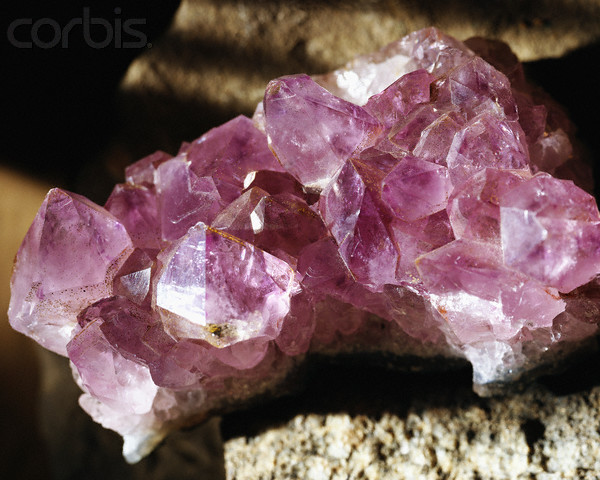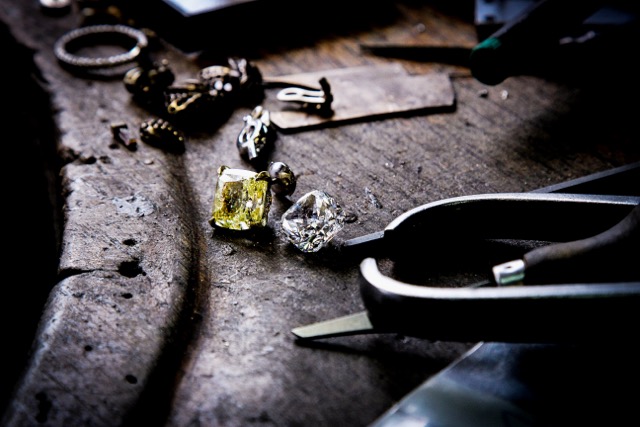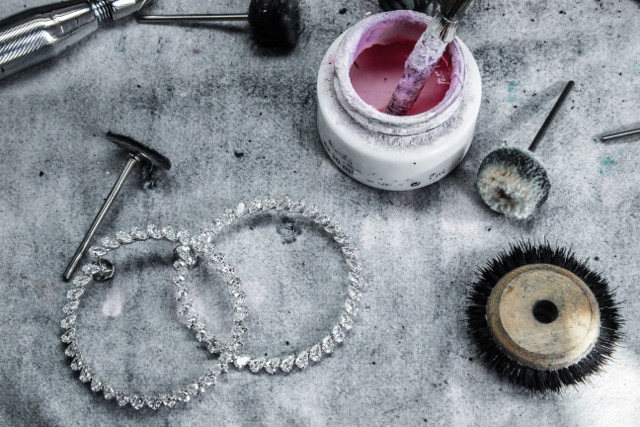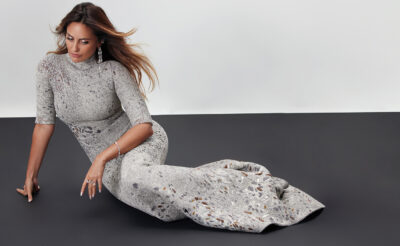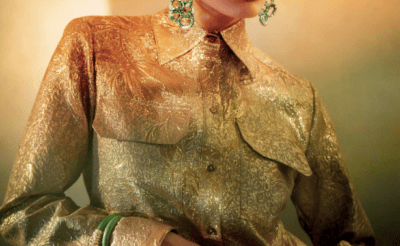From L.A. to Dubai, more and more fine jewellery designers are learning to embrace the beauty in imperfect stones to introduce a new wave of fashion-forward collections.
As modern-day women, it’s fair to say that there are certain definitive jewellery patterns that each tell a story about our life and personal style like no other form of accessory. For as long as we can remember, there’s always been a firm distinction between fashion-fuelled embellishments and delicate fine jewellery, with each adornment finding its own unique time and place in our lives. So, while Lanvin’s oversized ‘Love’ necklace or Yves Saint Laurent’s Arty ring would be our go-to frosting for one event, a diamond De Beers choker would decorate our décolletage for a completely different, more sophisticated occasion.
Today, however, we’re starting to see the onset of a fine jewellery evolution, with a new category of contemporary pieces founded by a wave of fashion-forward designers, who are set to shake up the industry as we know it. And, while it may come as a surprise to some that a growing number of women are suddenly starting to crave jewellery that’s imperfect and tactile, to others, it’s a movement that’s now set in stone. Think gems that could be been dug out of a wall or sliced in two before being set – this hotbed of jewellery designers rocking raw, uncut jewels is now firmly on the radar. One such designer, Monique Péan, confirms this, telling us, “There has been a shift in the concept ways to highlight a stone’s natural texture and develop new and interesting ways to set them.” And it’s not just the newbies – last month, the De Beers Group announced the value of rough diamond sales for the first cycle in 2016 to be up to $520 million, compared to just $248 million for the same period in 2015. Similarly, Natalie Kingham, Buying Director at Matchesfashion.com, told us that the online e-tailer has seen “a strong response to fine jewellery and, in particular, rough cut gemstones”. She goes on to say that she feels her customers “desire the modern yet luxurious aesthetics from brands such as Diane Kordas, Susan Foster and Monique Péan. Designers are more adventurous with their creations these days, coming up with individual pieces that display the diamonds’ and gemstones’ natural inclusions and distinct facets”.
So, why is it that more and more designers are relegating perfectly cut gemstones and choosing to forgo the respected four Cs of diamond buying – colour, cut, clarity and carat – and instead are opting for this more avant-garde approach with cloudy, raw and rough-cut stones? Well, as it goes, statement pieces are very fashion-forward right now, and using an imperfect stone is a great way to get a large stone at a lower price. “I’ve seen rough cuts gain popularity within the jewellery market recently,” says Rosanne Karmes, founder of LA-based fine jewellery brand Sydney Evan. “I think it comes down to two reasons. Firstly, they are a more affordable option compared to the traditional perfected stones. And secondly, there’s been a big resurgence recently of the Bohemian Seventies trend, in which rough cut jewellery was definitely a key look. I personally prefer a more finished, clean look still using the same stones.”
But, while Karmes may not be so keen to immediately adopt the trend, there are a handful of others championing it in all its glory. “As a designer, the idea of rough cuts, flat lays and other similarly cut stones is about the artistry and whimsical aspect I can add to a piece of jewellery,” says New York-based jewellery Martin Katz. “For a person with all classically styled jewels and jewellery, owning a piece of that pushes the concepts of convention is a lot of fun and a testament to the high level of taste and sophistication that person has.” We first saw the trend return to the mainstream back in 2014, when Maison Margiela revived its Ligne 12 jewellery line after a five-year hiatus. Playing on the concept of the family heirloom, its Pompadour collection comprises a Ceylon sapphire in an old-fashioned diamond setting at the end of a white gold band. Meanwhile, another trend that has really come into its own are one-of-a-kind diamond slices. Originating in India, they are in complete contrast to stones cut to precise specifications and a list of ideals which you can rarely tell apart. Instead, they have been thinly sliced and contain distinctive internal patterns that make each one completely unique. And they are celebrated so much so today that the Gemmological Institute of America now refers to them as ‘clarity characteristics’ rather than flaws. For them, it is more about the beauty of the piece rather than the beauty of the stone, setting them in a way that creates something completely unique yet refined.
Fine jewellery designer Susan Foster agrees, telling us, “When I first started working with imperfect pieces many years ago, I did so because of their rough raw nature, which I found so beautiful. Their imperfections result in something so perfect – where raw meets fine, and their irregularities and inclusions were not defects, but in fact the most attractive part. Simply put, imperfections are interesting.” When it comes to precious gemstones, designs featuring tourmalines and tanzanite are currently stealing the spotlight. Yasmine Haji, founder of Pembe Club jewellery, is one of the growing number of jewellery brands making a feature out of the scratchy inclusions, offering customers a massive collection of tanzanite throughout her designs. “Perhaps rough cuts are not beautiful per se in the traditional sense, as the standardised perceived beauty of a stone is generally comprised by the three Cs. These stones do not generally have any of these characteristics other than colour, but they are beautiful because they are unique. I have a 141 carat rough tanzanite in my collection. It differs from a cut and faceted stone in that you can have hundreds of quasi identical cut and polished stones, whereas you cannot have two same rough stones. Each is unique, original and somewhat still organic. And there is definitely a beauty in that.”
And, it’s not just international designers – there are a small group of forward-thinking regional designers jumping on the bandwagon, too. Nadine Kanso of BilArabi has taken to using rough cut amethysts in her collections, designing her hugely-praised Alef piece for the Design Miami show. “Rough stones can give an edge and a statement to the piece,” she tells us. “It allows it to be more of an art piece, a sculpture, rather than just a jewel or a piece of jewellery. It becomes something immensely more.”
Similarly, Nada Ghazal loves to use a rough, icy diamond for her label, Nada G, stocked in the region at the hugely popular S*uce Rocks. “While this is my favourite stone, I love using all types of rough cuts, too,” she says. “I love the way each rough cut piece takes on its own character – each one is different and tells its own story, fitting with other rough cut stones so distinctively. I love combining different diamonds with brushed gold in both yellow and raw white, there is no other stone that fits better.” So, while there will still be the traditionalists, who are sure to resist anything less than perfect when it comes to their fine jewellery collections, perhaps it’s time to look to the new, move with the times and learn to see the beauty in the imperfect. It is definitely there, and it’s most certainly something to marvel at.
For customers embracing these imperfections, they are sure to be enamoured by another hot trend that’s starting to sweep the industry now, too – blackening metals to make them look older. Oxidisation – the speeding up of silver’s process of tarnishing so it looks old and vintage – is also quickly picking up pace for those seeking unique pieces on a smaller budget. Because the blackening is a surface treatment, it wears off in raised spots and the black remains in grooves. This is something set to get much more popular this year, too, so watch this space.
